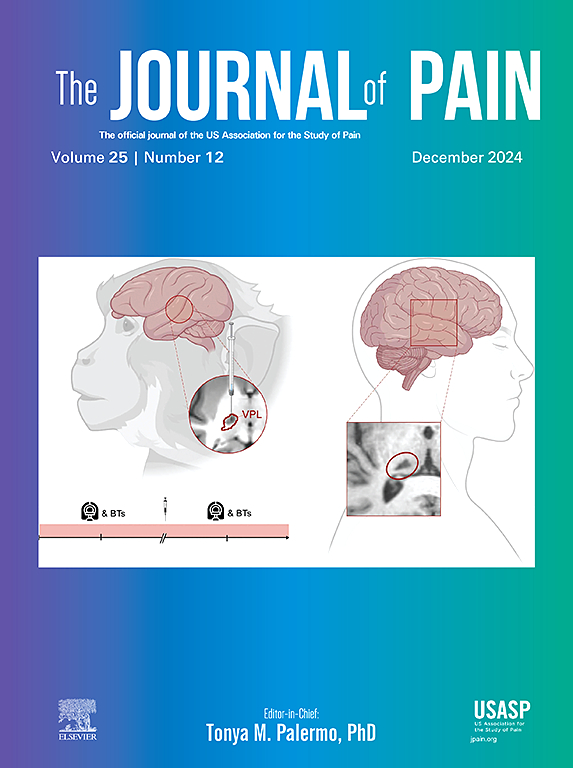Chronic musculoskeletal pain and its association with cognitive function and sarcopenia in older adults: Characterization and change over three months
IF 4
2区 医学
Q1 CLINICAL NEUROLOGY
引用次数: 0
Abstract
Pain, cognitive impairment, and sarcopenia share common risk factors and neurophysiological processes, but studies investigating cognition and sarcopenia in older adults with pain are scarce. This study's main aim was to compare cognition and sarcopenia between older adults with and without chronic pain. A secondary aim was to investigate predictors of cognition and sarcopenia at baseline and 3 months while adjusting for confounders. Participants (67 older adults with pain and 67 asymptomatic older adults) were assessed for sociodemographic and clinical information, pain (number of painful body sites – body chart, pain phenotype – PainDETECT, severity and disability – BPI, pain catastrophizing – PCS, and kinesiophobia – Tampa Scale), cognition (MoCA), sarcopenia (risk of sarcopenia - SARC-F, hand grip strength, and calf circumference) and physical activity (RAPA) at baseline and 3 months after. Older adults with and without pain did not differ in cognition (Mean (95% CI): Pain = 21.47 (20.60; 22.34); Asymptomatic = 21.75 (20.89; 22.61)), but older adults with pain had greater signs of sarcopenia than asymptomatic older adults, including higher risk of sarcopenia (Mean (95%CI): Pain=2.89 (2.41; 3.37); Asymptomatic=0.50 (0.32; 0.68)) and lower hand grip strength (Pain=24.01 (21.74; 26.29); Asymptomatic=27.98 (25.80; 30.16)). No between-group differences were found for calf circumference (Pain=35.03 (34.26; 35.79); Asymptomatic=34.55 (33.86; 35.24)). Pain phenotype (baseline) and kinesiophobia (3 months) contributed to poorer cognition. Kinesiophobia and catastrophizing (baseline), and pain severity (3 months) contributed to sarcopenia. Despite no differences in cognition between older adults with and without pain, pain-related variables contributed to explaining sarcopenia and cognition.
Perspective
This study compared cognition and sarcopenia between older adults with and without pain and explored the association between pain, cognition, and sarcopenia. Groups were similar for cognition, but older adults with pain showed higher signs of sarcopenia. Kinesiophobia and pain severity partially explained cognition and sarcopenia among those with pain.
求助全文
约1分钟内获得全文
求助全文
来源期刊

Journal of Pain
医学-临床神经学
CiteScore
6.30
自引率
7.50%
发文量
441
审稿时长
42 days
期刊介绍:
The Journal of Pain publishes original articles related to all aspects of pain, including clinical and basic research, patient care, education, and health policy. Articles selected for publication in the Journal are most commonly reports of original clinical research or reports of original basic research. In addition, invited critical reviews, including meta analyses of drugs for pain management, invited commentaries on reviews, and exceptional case studies are published in the Journal. The mission of the Journal is to improve the care of patients in pain by providing a forum for clinical researchers, basic scientists, clinicians, and other health professionals to publish original research.
 求助内容:
求助内容: 应助结果提醒方式:
应助结果提醒方式:


